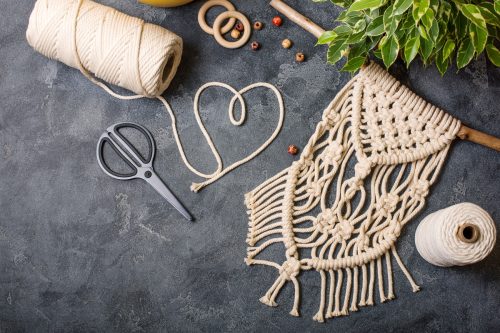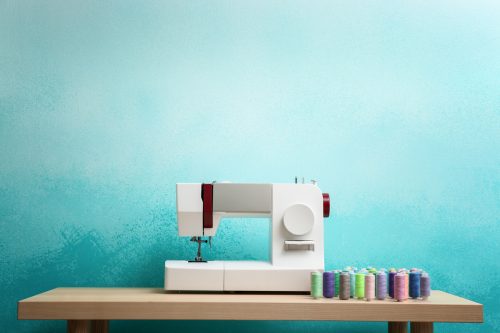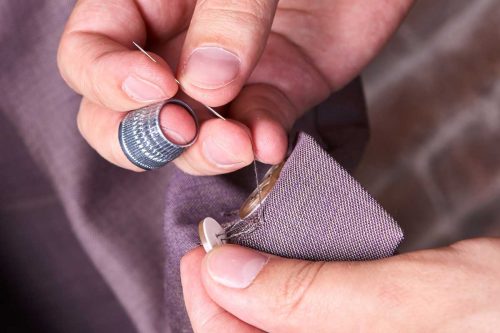Have you decided to work on a quilting project recently? Maybe you do not have a sewing machine or you would rather not use one. If this is the case, we have some ideas on how to quilt without using a sewing machine.
Quilting can definitely be done without using a sewing machine. It may take a bit longer but it is not impossible to accomplish. There are actually a few different sewing techniques you can use to quilt.
- Rag Quilting
- Hand Sewing
- Fabric Glue
In this guide, we'll discuss how to accomplish these different sewing techniques and what tools you'll need for each one. We'll also cover how a quilt frame works and how to do a few different stitches. So be sure to keep reading.
![Sewing a quilt with quilting machine, Can You Quilt Without a Sewing Machine? [Here's How]](https://craftsbliss.com/wp-content/uploads/2020/11/Can-You-Quilt-Without-a-Sewing-Machine-Heres-How.jpg)
How To Quilt Without A Sewing Machine
In this section, we'll cover three different techniques that you can use to quilt. We'll also include all the tools and materials you'll need to get started.
Rag Quilt
A rag quilt is a blanket made with equal squares of fabric just like a regular quilt. Before you get started, make sure you have the following:
- Material scissors
- A ruler
- Fleece or another chosen material
Click here to see this product on Amazon.
Steps For Making A Rag Quilt
Choose The Fabric
Choose the type of fabric and design you want for your quilt. Fleece is most commonly used for this type of quilting. Something heavier would work best for your rag quilt.
Size Of The Quilt
You want to now think of the size of the quilt you are making. Is it for a baby or is it for a full-sized bed? A typical baby quilt is 36 inches by 54 inches in measurements. You can make your squares 5 inches which then become 4 inches after the quilt is finished. This leaves enough room to tie off your squares and attach others.
After cutting the number of squares you need to finish the quilt, you need to cut one-inch slits on the sides you will be tying together. Make sure they are even cuts so that the quilt will be even and proportionate when finished.
Arrange The Squares
Arrange your squares as if they are already tied together so you can move them and arrange them the way you want. Create your own design. It may even help to number the back of the squares so you know where each goes.
Tie It Off
Once you have a pattern set, it is time to tie. Your first square will be tied to the second and then you keep going until the rag quilt is completed! After you are satisfied with the blanket, you can wash it to "fluff up" the seams.
Overall, this project will take some time. If you are working on it non-stop, you could finish it in one day depending on the size of the blanket. We would consider a rag quilt great for beginners and experienced quilters alike.
Check out the video below to watch a tutorial on YouTube:
Hand-Sewn Quilt
Sewing a quilt by hand requires time and patience. But the time investment does pay off. Before you get started with your hand-sewn quilt, you'll need the following:
- Fabric options
- Batting
- Fabric scissors
- Thread
- Needle
- Thimble
Click here to see this product on Amazon.
Steps For Making A Hand-Sewn Quilt
Choose The Fabric
Think about the design you want to accomplish on your quilt. It may be easier to draw out a picture of your idea. Maybe you have a pattern in a book or online. Look these over and make sure you have the colors and patterns you want to use.
Size Of The Quilt
Now you need to figure out the size of the quilt you are wanting to make. An average full bed measures 54 inches by 75 inches. Do you want the quilt to cover just the top of the bed or have it hang over the sides? If you would like it to hang over the sides of the bed, we recommend making a queen size quilt for a full-size bed. Your quilt will then measure 60 inches by 80 inches when completed.
Cut The Squares
Once you've decided on the size of the quilt you want to make, it is time to cut out your squares. Your squares maybe 5 inches or you may have a mix of sizes depending on the design. It is recommended to add an inch to the square to leave space for it to be sewn.
A typical quilt has some type of fabric for the back of the square pieces. It can be a heavy fleece or nice cotton. At this point, make sure your backing is ready for the end of the project when you can apply your squares to it. When that is ready, it is time to hand sew your quilt squares.
Start Stitching
Grab your "batting," the piece of fluffy cotton that goes between your pieces. This adds warmth and comfort to any quilt. It is easier to sew your square pieces right onto the backing. It makes less work for you in the end. Place your material square onto the backing and secure it with safety pins at the top. This will keep everything in place. Put on your thimble and thread your needle to start stitching. A simple dash stitch is the easiest when hand stitching. However, there are many more stitching options available.
Hand sewing anything takes some time. If you are making a Queen-sized quilt, do not expect it to be done within a day. It may take 8 weeks or more to completely finish a quilt of this size.
Check out the video below to watch hand quilting basics on YouTube:
Fabric Glue Quilt
Using fabric glue to quilt takes out a lot of time that's traditionally taken up by pulling a needle and thread through the fabric. Using fabric glue is simple and inexpensive. Before getting started with this technique, make sure you have the following:
- Your choice of fabric
- Fabric scissors
- Fabric glue
- Backing
Click here to see this product on Amazon.
Steps For Making A Fabric Glued Quilt
Have Pieces Ready
Have all of your quilt pieces cut to size and ready to be used. You may want to use backing for this quilt or not. This is the perfect method for making bags, dolls blankets, or even cloth placemats. Have the design you want on hand so you can refer back to it as you are piecing your squares together.
Piece Together
If using rows of squares, we recommend numbering the back of each square so that you know which one comes next in your design. You can pin the corners of the squares to make it easier for them to stay in place. Then you add the glue to the edges. Again, make sure you are leaving about an extra inch on all of your squares so you have space for the glue.
Let Dry
After gluing all of your squares in place, you want to let the glue dry. Overnight is an ideal time to leave the project dry. This will help the glue set. When you check the quilt and glue, make sure to look for any places that may need an extra drop of glue. You do not want any gaps in the fabric. You may then glue your completed quilt to another piece of fabric. This will complete the look.
If making placemats or a small dolls blanket, you can expect to get the main quilt front in one day. Leave it to dry overnight.
Note: Most fabric glues will set in the wash, however, it is suggested to wait at least 72 hours before fully washing your quilt.
What Is The Difference Between A Quilting Sewing Machine And A Regular Sewing Machine?
They are both sewing machines, however, the quilting machine has a wider variety of available stitches. It also provides a wider space to work with when sewing fabric. The "throat" of the machine will have more space for fabric than a regular sewing machine.

How Does A Quilt Frame Work?
A quilt frame helps to pull the fabric tight by inserting the fabric and batting together on the sides of the frame. This makes it easier to sew the pieces together. It will keep you from stitching too loose. A frame also makes it easier to sew without having to hold all the pieces in your hand while stitching.
Click here to see this product on Amazon.
Can You Hand Quilt Without A Frame?
A quilting frame is not necessary. It does make things easier in the long run but it is not something you must use when making a quilt. Hand quilting can still produce the same product when finished.
Can You Use Stitch Witchery For A Quilt?
Absolutely! This is a nice alternative to fabric adhesives. It can be a lot less messy, as well.
Click here to see more on Amazon.
Can You Stitch In A Ditch By Hand?
It is definitely possible to ditch stitch by hand. Just make sure to follow the "ditch" and try to keep it as straight as possible.
Check out the Youtube video below for a tutorial on the technique:
In Closing
There are a couple of different ways to quilt without using a sewing machine. It may take a bit longer to complete the finished product by hand, but it can be accomplished easily. You may also choose to use fabric glue or even use the rag quilt method. No matter which technique you choose, your end results will be amazing!











![Read more about the article How To Get A Smooth Paint Finish On Wood [A Complete Guide]](https://craftsbliss.com/wp-content/uploads/2021/09/Painting-timber-boards-outside-with-the-white-paint-500x333.jpg)